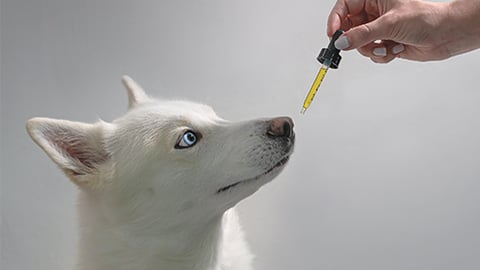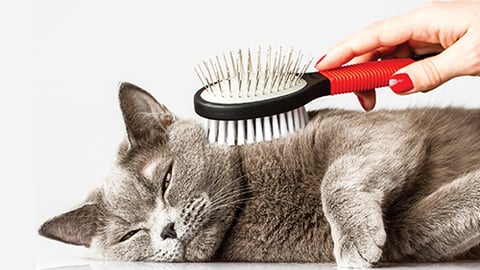Pet Retail Sales Gaining During the Pandemic
We’ve never spent this much time together — like, ever.” Maddy Ling is a 24-year-old New Jersey massage therapist who describes herself as having one great love of her life — her 4-year-old Boston Terrier mix, Lilo. “I mean, I love her so much, but I’m usually just so busy with work, school, my friends, etc. But now it’s just me, her and these four walls until this thing is over.”
This thing is, of course, the global pandemic caused by the spread of COVID-19, a highly contagious virus that causes a respiratory illness characterized by such symptoms as shortness of breath, loss of taste and smell, and digestive issues. Although the elderly and the immunocompromised are the hardest hit by the disease, even otherwise young and healthy patients have ended up hospitalized, using ventilators to breathe.
Key Takeaways
- Amid the health and economic uncertainties of the coronavirus crisis, pet owners have been curtailing their shopping trips and paying closer attention to prices.
- Retailers should create pet care displays in easily accessible areas and spotlight less expensive store-brand and value offerings.
- Grocery delivery and especially curbside pickup are great ways to safely get pet products to consumers.
Ling, like most Americans, has been under some version of a stay-at-home order since mid-March. While some states and counties are reopening slowly, others are moving more quickly. Still, the numbers show that opening back up comes with rising numbers of coronavirus cases. While there are some who say that it’s just impossible to ask an entire country to stay home, given the looming long-term economic and social ramifications, it’s clear that there won’t be an easy or quick solution to the crisis anytime soon.
In May, the American Pet Products Association (APPA), the Pet Industry Distributors Association (PIDA), the Pet Industry Joint Advisory Council (PIJAC), and the World Pet Association (WPA) surveyed more than 500 of the organizations’ members on the effects of the COVID-19 crisis on their businesses. More than 75% of the survey respondents reported that they remained open for business in some capacity, but changed much of their focus to safety. Most cited the use of sanitation and cleaning as a part of this process. Wearing personal protective equipment (PPE) came in a close second. Using hand sanitizer stations and limiting the number of visitors allowed in the space were also cited. As retailers and consumers alike adjust to the “new normal,” selling pet products has changed in some significant ways.
Stocking for a Pandemic
“The first change retailers are seeing is where the consumer’s priorities lie when purchasing goods right now,” explains Shaun Williams, the owner of Pawfect Pets, a boutique pet brand based in Houston. The company sells handmade pet toys and accessories with an irreverent vibe. Among its best-selling products are stylish printed leash-and-collar combos.
“You’re going to notice that the essentials will sell out first, and everything else comes after that,” adds Williams. For instance, items like pet food will be the first to fly off the shelves. And since groomers are closed or taking limited appointments, consumers may be looking to purchase grooming products more than they usually would.
“Recently, there have been some issues with the supply chain in other product categories like toilet paper and bleach,” he notes. “Even though most stores have been able to get those scarce items back in stock by now, consumers are still worried about getting their essentials. You may see your customers stocking up on things like dog food or kitty litter.”
Williams also warns retailers that consumers will be more price conscious than ever. With millions out of work and unemployment numbers up significantly, many shoppers are feeling the squeeze on their finances. Even those still working don’t know what the future may bring. “They’re gonna be looking at prices, and looking hard,” he affirms. “Expect store-brand sales to rise significantly as well as value brands.”
Stand-alone displays and end caps will also come in handy for moving desired pet products with shoppers in a hurry. Since the CDC has recommended shopping infrequently and spending as little time in stores as possible, a display near the entrance or on an easily accessible end cap prevents the shopper from having to go down narrow aisles or into far-flung areas of the store. For example, a retailer could set up an entryway display with cans of cat food to entice consumers to add the product to their carts before they even make it to the pet food aisle.
Safety Means Distance
“I know the word ‘unprecedented’ is being overused, but this is unlike anything we’ve ever been through before,” asserts Brianna Austin, a retail marketing consultant with more than a decade’s experience working with grocery brands such as H-E-B and Randalls. “Everyone’s first concern is safety. For now, that means limited contact, making time to sanitize the store at regular intervals and offering alternative shopping experiences.”
While many grocery retailers have been offering delivery services, the COVID-19 crisis has created an immediate need for contactless delivery. In this iteration, the delivery driver leaves the packages outside of the location in a designated area without interacting with the consumer at all. In some cases, the driver will ring the doorbell or knock on the door, and then step back more than 6 feet. This way, the driver can confirm that the products were delivered, but also avoid interacting with the customer.
“Unfortunately, delivery is a little hard to start implementing if it wasn’t on your radar before all of this,” warns Austin. “You’ve got to work out your transportation and your staffing for the deliveries, as well as the packing procedures. On the other hand, curbside pickup is something you can get working on immediately.”
Curbside pickup has the consumer either order online or over the phone. Then she drives to the store and remains in her car while a staff member places the order in her backseat or trunk. For the consumer, it prevents the need to go into the store and prolong her exposure to other shoppers. For the retailer, it cuts down on the number of shoppers in the store. This process does require staffing and designating an area for the curbside pickups to occur, though.
The good news is that whatever processes grocery retailers put in place to make distance shopping possible will be beneficial far into the future. Retailers and manufacturers both report that they expect demand for these practices to extend well beyond quarantine, according to the survey by the APPA and its partners.
Ling agrees with that expectation. “This whole thing has taught me a lot about what I can live with and what I can live without,” she says. “And what I can’t live without is dog food [for Lilo.] Having someone deliver that for me is probably going to continue well after it’s safe for me to do my shopping on my own.”













